If you’re planning to participate in a Spartan race, you cannot rely on luck. You need a comprehensive training program to win the challenging obstacle race. You need to work hard and challenge your physical and mental limits to win the game. In the Spartan race, you can expect barbed wires, mud, and things beyond your imagination.
So, if you’ve not participated in a Spartan race before, you might be wondering if you need to train for one. Every Spartan race is approximately 3 to 4 miles long and comprises over 15 obstacles.
Since the organizers do not reveal the race map before the beginning of the sprint, it’s entirely impossible to judge what’s in store for you and act accordingly.
You’ve got to be ready for anything and everything. No matter what kind of obstacles are involved, your upper body strength, lower body strength, and endurance will be tested at every level.
In this guide, we’ll discuss how to train for a Spartan race. We’ll cover different components that you should pay attention to and prepare for the race. Read on to know more.
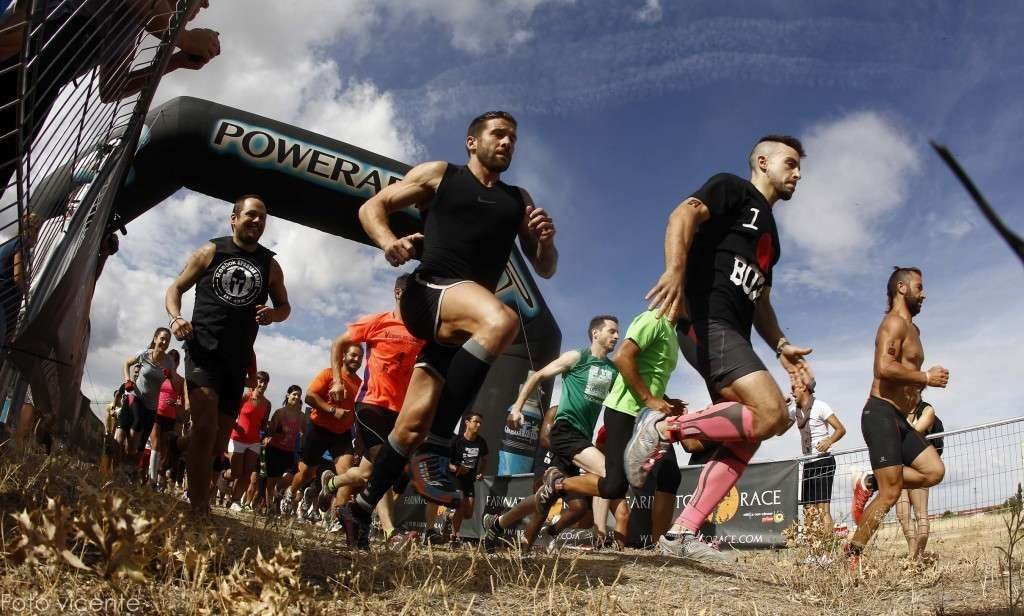
Contents
Types of Spartan races
Before we tell you how to train for a Spartan race, let’s look at different types of Spartan races so, you’re clear about what you’re preparing for.
The three primary Spartan races are:
- The Beast
- The Super
- The Sprint
- The Ultra Beast
Spartan race | Distance | Obstacles |
The Beast | 12 to 14 miles | 30 to 35 obstacles |
The Super | 10 to 12 miles | 20 to 29 obstacles |
The Sprint | 3 to 5 miles | 20 to 23 obstacles |
The Ultra Beast | More than 26 miles | More than 60 obstacles |
Obstacles you can expect
Here’s a list of obstacles that can challenge you during the Spartan race:
- Dragging tires
- Carrying sandbags
- Spartan ladder
- Carrying atlas
- Jumping on the fire
- Hanging like an ape
- Throwing a spear
- Jumping huge walls
So, from the list of obstacles, it is evident that you’ll need a lot of upper body strength powerful yourself throughout the race.
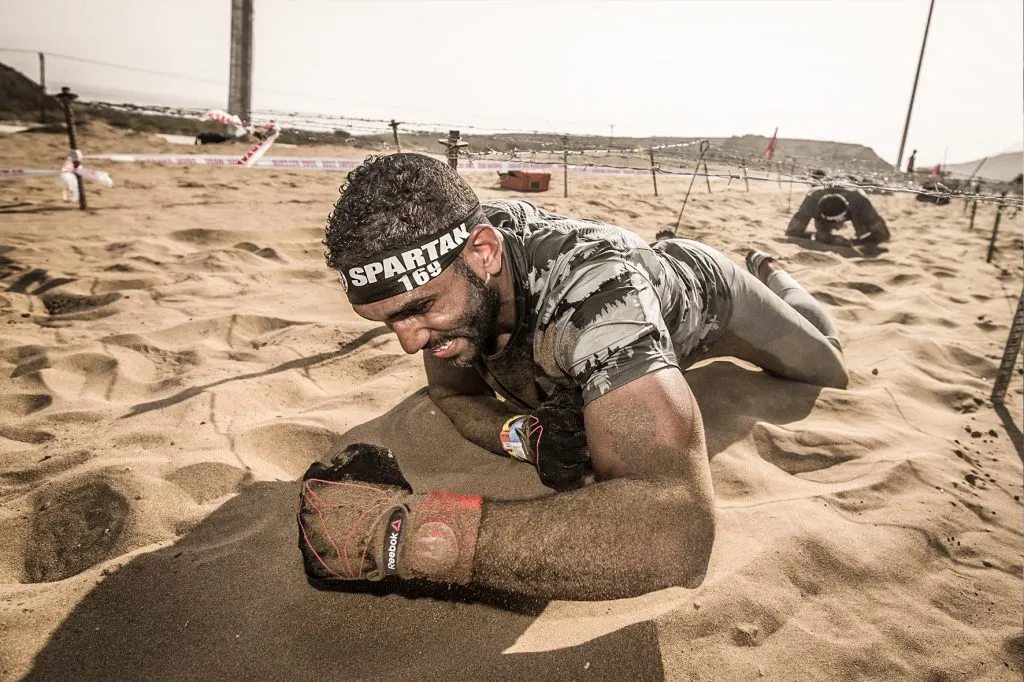
Components of Spartan Race Training
Now that you’ve identified different obstacles that you can encounter during the Spartan Race Training, let’s look at the essential components of Spartan training that can help you beat the obstacles.
Endurance training
Even though the Spartan race is just 3 to 4 miles long, don’t take it easy. Even if you’re used to easily completing a 5k run in less than half an hour, a Spartan race can take you anywhere between 40 minutes to 150 minutes to finish.
So, if you want to prep up for the tough race, make sure you complete at least one 3- or 4-mile race per week. Slowly and steadily, your body will be able to cope up with a 6- mile run.
If you are prepared to handle long distance runs, you’ll easily sail through the challenging Spartan race.
Incline and hill training
The more uncomfortable you feel during the training, the more comfortable you’ll be during the Spartan race. The more intense the training you adapt to, the better it will be for the race. You can expect to climb rugged hills, so make sure you also include incline or hill training in your Spartan race training program.
Sprints
It’ll be a good idea to include a sprint or interval workout session at least once per week to boost your anaerobic threshold. The more you work on sprints, the quicker you’ll recover from obstacles and hills.
Experiment with the speed and duration of the sprints. For longer sprint interval, reduce your speed. For shorter sprint interval, increase the speed. Begin with shorter intervals and grow the intensity with time.
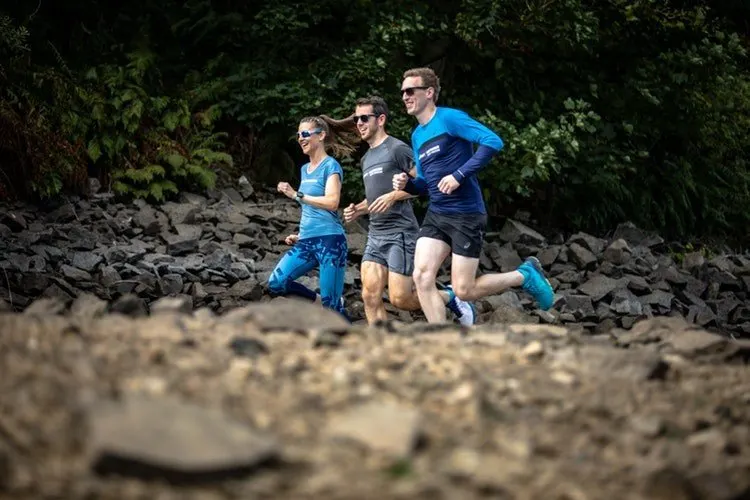
Overall body strength
Only working on the upper body strength or lower body strength won’t cut the deal; you need to focus on overall body strength.
If you don’t want to lose the race just because you couldn’t swing like an ape, you need to work on your upper body strength.
To boost your overall body strength, you can do push-ups, pull-ups, lunges, squats, and climbing. Including plyometric exercises can help you overcome the jumping-related obstacles.
Below are is a summary of various exercises you should incorporate within your Spartan Race training regime:
Dead Hangs
For you to succeed in most obstacles, you will need strength. Good mastery of dead hangs develops your strength, especially with the grip. A good hold or grip helps you thrive in obstacles that involve things like pulling ropes and climbing walls.
First, clinch on a bar that is elevated, and hang in there with your feet dangling. In the same position, maintain the dead hang position for at least 30 seconds without losing form. Then, repeat the same for a while as this training will strengthen your grip.
Pushups
The workout develops your upper body strength, especially your chest and arms. It also helps build your core. Push-ups will come in handy when you find a challenge that requires you to climb walls, crawl under barbed wire, etc.
Get down on the ground, set your hands slightly wider than your shoulders, ensure that you place your feet wider apart from your feet in a comfortable way. Squeeze those glutes, while extending your elbows.
With your chest on the ground, pause slightly and then explode back to the same position. While doing push-ups think of them as planks with arm extensions. Try doing about ten every minute for ten minutes.
Plank holds
It is arguably one of the simplest exercises that actually translates to significant gains in training. Planks engage your arms, shoulders, loops, and back. It aids with flexibility, posture etc.
Planks are associated with core strength, and success in a Spartan race depends on this.
Planks come in play when the obstacles involve lifting something like a stone or a log.
To do a plank, find a flat surface, hold your elbows directly under your shoulders then ensure that your wrists are in line with your elbows with the spine aligned from head to your elbow.
Squeeze those glutes as you exhale and contract. Hold a plank for at least 20-30 seconds. Take a rest for a minute then repeat the planks five times.
Farmer carry
The farmer carry aids with good upper and grip strength. It is essential since in a Spartan race you will be expected to carry some weight.
To carry out the exercise, grab a pair of dumbbells or anything heavy around you, hold on to it for about 60 to 90 seconds, moving with it from point A to point B back and forth.
Do it for about 1min 30 sec then take a rest for about 4 to 5 minutes and repeat.
If you are a busy person with crazy schedules, but still want to participate in the Spartan race, then you might want to make full body workouts your go to exercise.
However, focusing on full body workouts does not mean you disregard the lower and upper body workouts, because all your body parts must be fit for the race.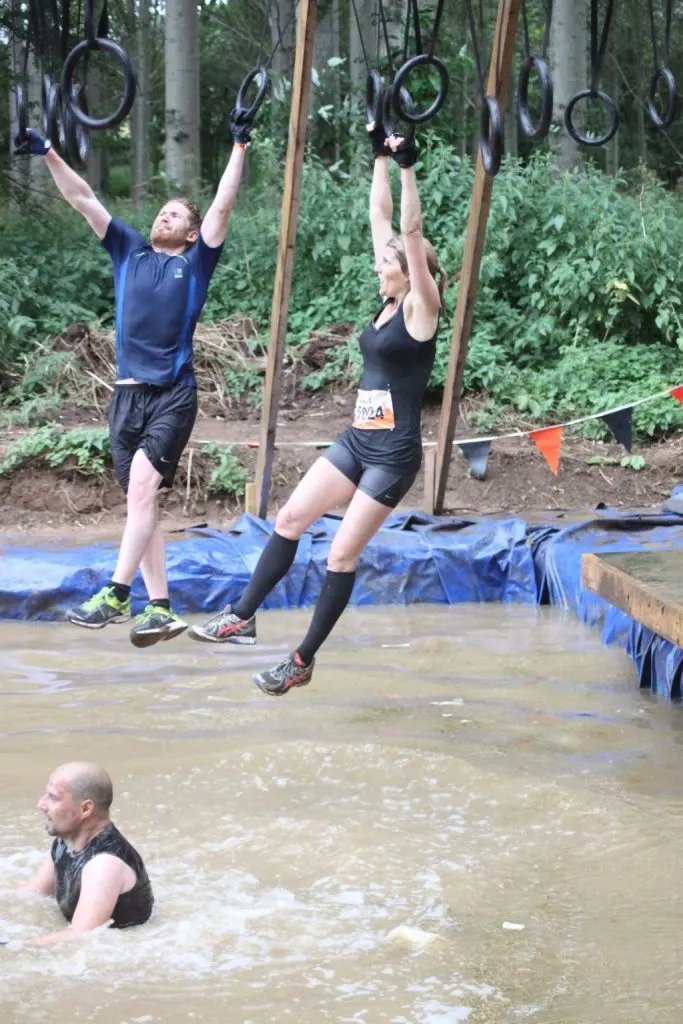
Burpees
You have undoubtedly heard of burpees through your gym instructor or your workout applications. If you are to do a Spartan race, then learning how to do burpees is highly recommended.
Burpees target all muscles especially the arm and aid with overall body strength that you will need to conquer the obstacles.
In fact, Burpees are a common penalty when you fail to hit targets in a Spartan Race.
To do a burpee, you will need to begin in a squat position. Put your hands on the floor ensuring that your chest touches the floor and your legs are straight.
Assuming the push-up position, return your feet to the squat position then finally jump up with a straight body and hands over your head.
It is recommended that spare around 10 minutes doing five burpees per minute in each workout session.
Bear crawls
Bear crawls is another all body workout that involves nearly all your muscles. They help with shoulder hip mobility and overall coordination.
Most of the obstacles you will experience in the race will require you to get down on the ground, crawl through mud, rocks, and dirt etc.
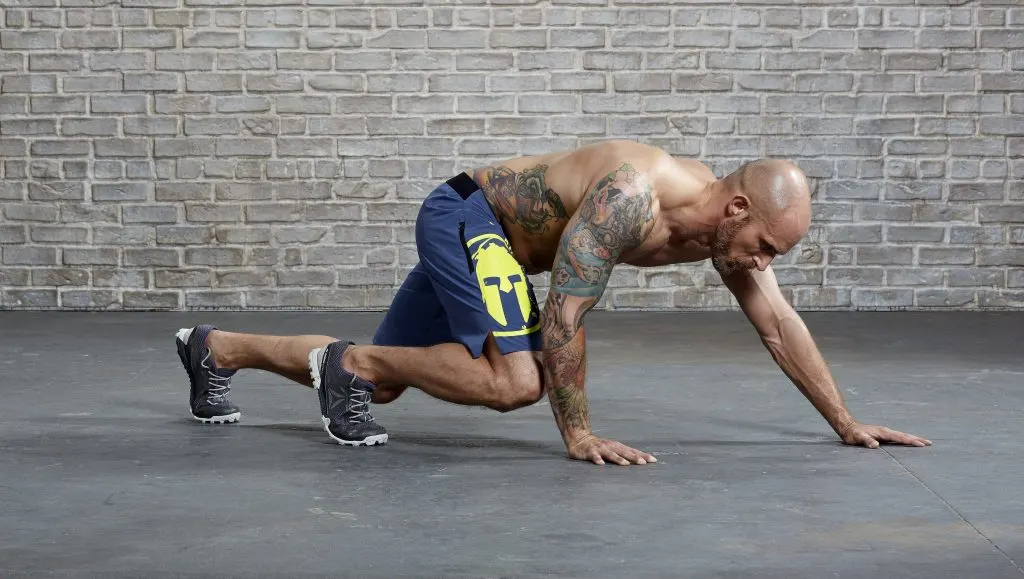
It generally involves dragging your body through the terrain. If you wish not to struggle with the underneath challenges, you need to master the art of doing bear crawls.
Given it’s a whole-body workout, bear crawls help with overall race performance.
Assume a push-up or a plan position. Make sure your knees are underneath your hips, your ribs, shoulders, and elbow aligned. It will form a nice gap between the ear and the shoulder.
After ensuring that your back is nice and flat, lift those limbs an inch off the floor. Take the opposite leg and move forward in a crawl, then you start crawling forward in a few steps.
Repeat this to build up a better immunity for the rigorous race.
Squats
Squats come in different variations. The notable ones include split squats, air squats, bodyweight squats, etc.
The overall aim of squats is to strengthen your glutes and quads. Imagine climbing a mountain, or carrying a log and your feet can’t carry you, or you feel pain and tired?
Frequent squats training will help in handling these obstacles during the race.
To do a squat, take a nice wide stance and put your hands in front for balance. In that position assume a sitting posture as if you were sitting on a chair.
While doing so, make sure that your knees stay behind the toes while the chin is up, and you are looking forward. As you do this, your hip and knee muscles get strengthened.
Repeating the exercise will enhance your muscles making them stronger and pain-free in the Spartan Race.
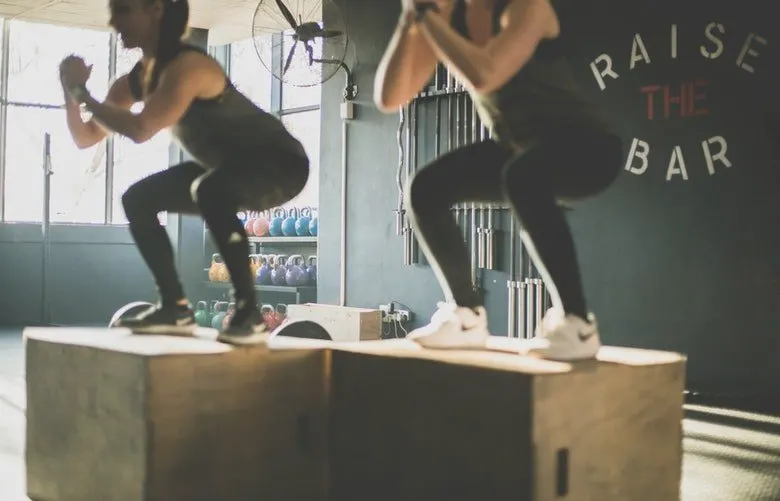
Lunges
Just like any lower body workout, lunges are essential for Spartan training. Lunges develop your quads, glutes, and arms.
You will experience the benefits of doing lunges when you find obstacles that involve climbing mountains or stairs during the race.
Most people consider lunges as a double leg exercise but they actually help the two legs, separately. One leg is involved for stability and the other one for strength.
Before you begin doing lunges, ensure that your upper body is nice and straight and your shoulders are also relaxed.
Take a step forward, lowering your hips until both the knees are bent to 90 degrees.
Make sure the forward knee is above the ankle, and not pushed out too much while your other knee is not touching the floor.
Rope jumping
Rope jumping is another excellent lower workout. It is so easy and can be done anywhere. Before you start jumping, you should consider a few things.
If you are 5ft tall and above, the recommended size rope should be around 3ft. Once you have the right rope, hold it, but only if the body is in perfect symmetry.
Jett your wrist out of the side of the hips making the rope spinnable. Bend your knees low then get your toes 2 inches off the ground before you start spinning the rope.
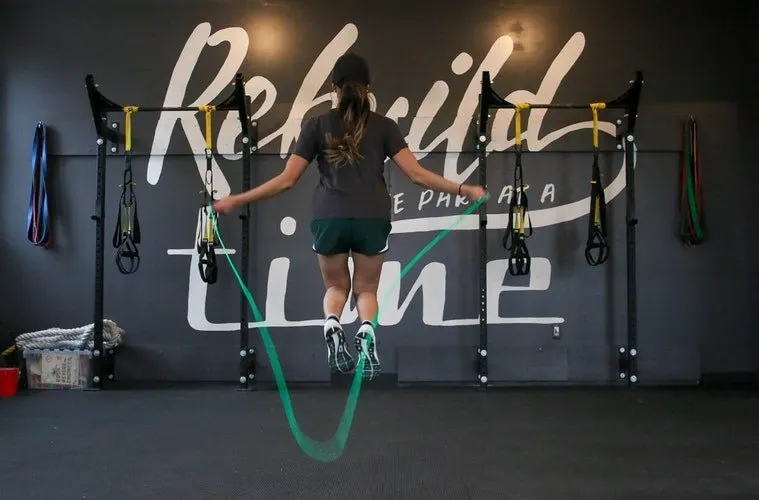
Adequate rest
Don’t forget to give your body rest for at least 2 days every week to allow it to adapt and repair from minor injuries.
Rest is critical to boosting your performance, maximizing results, and averting injuries.
An ideal 7-day Spartan race training program
Day | Morning | Evening |
Monday | Run 4 to 6 miles | Upper body strength training |
Tuesday | High-Intensity Interval Training (HIIT) or CrossFit training | Lower body strength training |
Wednesday | Light Intensity Training | Gymnastics or Upper body strength training |
Thursday | Rest | Rest |
Friday | Incline/Hill Training | All Body strength training |
Saturday | Run 8 to 12 miles | Plyos/Jump training or Lower body strength training |
Sunday | Rest | Rest |
Hard work
Never take a Spartan race lightly; it’s extremely challenging and different from all other races.
Without ‘hard work,’ you won’t even be able to complete half of the race. Nevertheless, hard work can take you a long way.
With a great training plan and the right mindset, it won’t take you too long to become a winner.

Tips on working hard and getting started for the Spartan race
- You can work out yourself or hire a trainer. Working with a trainer is always a better option. There are several useful guides available on Spartan’s official website. Moreover, you can access training videos, suggestions from ex-Spartans, tips and tricks to win the race, and a lot more.
- If you start the training, make sure you are consistent and don’t miss it even a single day.
- Don’t just focus on physical training and pay equal attention to other aspects of the race. While it is most important to be physically fit, your mental readiness is also required.
So, if you’re thinking about your ‘luck,’ it’s important you understand that there is nothing such as luck in a Spartan race.
Commitment towards preparation
When you register for a Spartan race, you’ve already signed up for lots of hard work and dedication towards achieving your goal.
The dedication also requires tons of effort. You cannot afford to keep ranting about not having time; no matter what, you have to make time.
You have to push yourself through the most challenging situations and be committed towards your training. So, all this demands commitment and dedication, not sheer luck.
Tips on staying committed and dedicated while training for the Spartan race
- Smartly manage your time – While training, you’ll realize that working out, taking care of your nutrition, and several other aspects of training require a lot of time. So, make sure you keep a lot of time in hand. Efficiently manage your daily routine to make maximum time for your training.
- Make sure you sign up for the race – Training does not mean you keep waiting for the perfect time to participate in the race. There’s nothing such as the ‘right time.’ Goals help you stay committed and dedicated. So, unless you sign up for a Spartan race, you won’t have a goal to look forward to and push yourself to work hard.
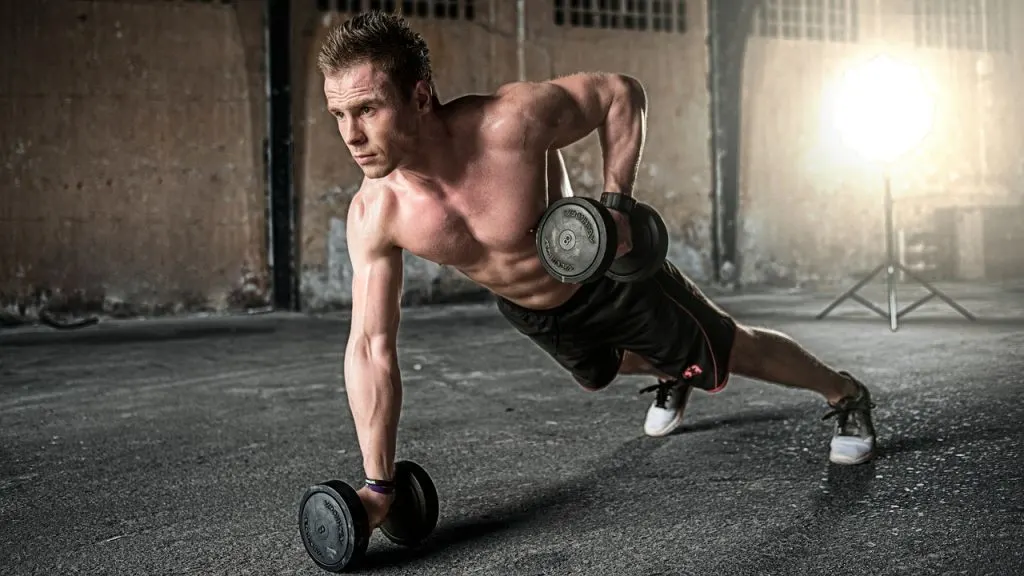
Constant motivation
Motivation plays a critical role in preparing for the Spartan race. Each time you accomplish a new target during your preparation, your motivation should spike four-fold.
So, if you’re having a tough time finding motivation, set goals that are smaller and easily attainable.
Tips to get you motivated while you’re training for the Spartan race
- Begin with attainable goals – Before you start the training program, asses your present-day physical ability and then start. Start by running shorter distances and then move to longer ones. Once you’re easily able to run 3 miles, asses how long it would take you to run 5 miles.
- Hit milestones and rejoice them – Once you easily cover the 3-mile track, celebrate your achievement. And, when you cover the 13-mile track, remind yourself that you’ve accomplished something big. This will help you a great deal in getting some motivation.
‘AROO’ is the motivation call for a Spartan race.
Diet plan for Spartan race training program
Whether you’re a pro in the Spartan race or participating in your first ever Spartan race, your body requires some essential nutrients to stay fit and perform well.
In simple words, nutrition is critical to recovery and performance. So, it’s crucial to plan your diet well and be diligent when it comes to your meals.
Some weeks before the Spartan race
Consuming the right diet should not be limited to the last 24 hours before the Spartan race. The healthier you eat, the more essential nutrients your body will absorb to enhance your performance.
Also, make sure you keep your body hydrated throughout the Spartan race training program. As much as possible, focus on proteins and cut down the intake of unhealthy fats.
While it is true that your body is burning calories throughout the training program; it’s still necessary to take care of your daily calorie intake.
Recommended proteins
- Fish is a wonderful source of protein and easily available for consumption. Salmon, Tuna, Trout, and Mackerel are some fish that contain high Omega-3 content which is required for proper metabolism.
- Beef comes with a natural supply of saturated fat and high protein content which boosts the immune system and helps maintain optimum liver and cellular function.
- Chicken is also a bioavailable protein and source of amino acids and saturated fat. Organic chicken eggs are high in Omega 3.

Recommended fats
- Use oils such as Walnut Oil, Olive Oil, and Flaxseed Oil that are rich in Omega-3 to promote body functions. You can also use Coconut oil which is popular for its anti-bacterial and anti-viral properties. Try your level best to use unrefined and cold-pressed oils.
- Avocados are high in monosaturated fats and fiber. They are also richer in potassium than bananas. Avocados are also recommended for their high Vitamin B, Vitamin E, and Vitamin K levels and their ability to reduce LDL cholesterol levels.
- Dairy products are rich in calcium and help in improving your immune system.
Recommended unrefined carbohydrates
- Quinoa, also known as a superfood, is easy to digest and gluten-free. It is an incredible source of minerals and calcium.
- Oats are versatile carbohydrates that lower bad cholesterol and are great sources of fiber.
Recommended fruits and vegetables
- Bananas – High glycemic index to substitute your body glycogen.
- Strawberries and Blueberries – High in Vitamin C and zinc, powerful antioxidants.
- Kale – High in Vitamin C, Vitamin K, beta-carotene, and calcium.
- Red Bell Pepper – High in Vitamin C.
- Asparagus – High in Vitamin C, Vitamin A, Vitamin E, chromium, protein, and glutathione.
Final thoughts on how to train for a Spartan race
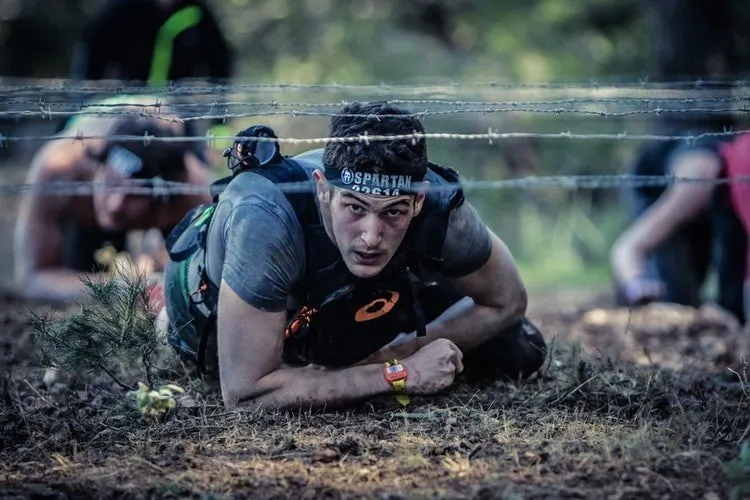
To win a Spartan race or at least last till the end of the race, physical fitness is not enough. You need to work on your overall strength, improve your mental alertness, consume healthy food, and stay motivated throughout the training program.
While we recommend you allow your body some rest every week, don’t become lazy and skip more than the recommended days.
There’s no magic wand that’ll get you past the finishing line of the Spartan race and luck does not exist here.
Remember, the final race and training for the Spartan race follow the same rules – work hard, stay committed to your goals, constantly motivate yourself, and push yourself to achieve the desired results.
We hope you found our comprehensive guide on how to train for a Spartan race useful. If you feel we’ve missed something important, please add the missing information in the comment section below for our readers.
Also, if you have any questions related to the Spartan race training program, you can write to us, and our experts will help you with the answers as soon as possible.
Further read:
- Running Shoes vs. Training Shoes: What’s the Difference?
- 4 Best Shoes for Spartan Race and Tough Mudder [2020]
- Spartan Race vs Tough Mudder Compared – Which Obstacle Race is Better? - January 22, 2022
- Brooks Addiction Walker vs New Balance 928: Which is Best? - December 7, 2021
- Brooks Ravenna vs Adrenaline – Which is Best for You? - December 4, 2021
